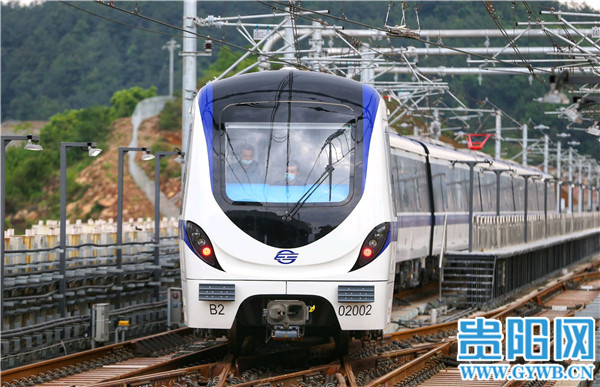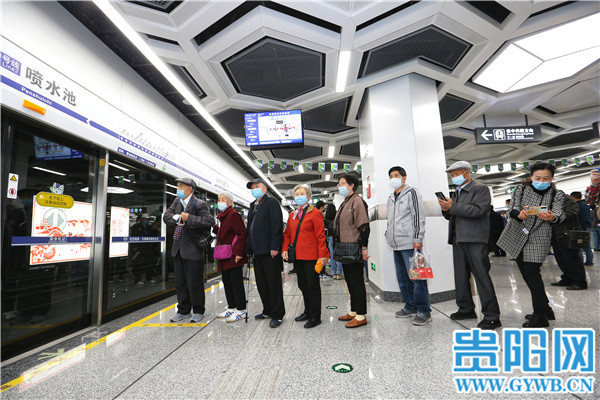Guiyang lauded as national demo city for public transport

The rail transit line 2 starts operating in Guiyang in April. [Photo/Guiyang news network]
Guiyang, capital of Southwest China's Guizhou province, was recently recognized as a national demonstration city for public transport development, according to a notice issued by the Ministry of Transport.
During the 13th Five-Year Plan period (2016-20), Guiyang has continuously improved its public transport service system and built a multi-level public transport network consisting of buses, taxis, and rail transit lines.
As of the end of 2019, there were 3,374 public transport vehicles and 15,120 taxis in Guiyang, and 229 operating lines extending 5,819 kilometers. The total number of public transport passengers was 609.88 million. The rural public transport network has achieved full coverage of all administrative villages in the city.
The bus rapid transit for the Middle Ring Road of Guiyang, as well as rail transit lines 1 and 2, was put into use. The first phase project of rail transit line 3 and line S1 are currently under construction.

Passengers wait in a line at a station of rail transit line 2 in Guiyang. [Photo/Guiyang news network]
In the past five years, Guiyang has added 117 km of highway, and the total expressway mileage has reached 612 km.
The total length of urban roads in the city has exceeded 2,100 km, and the road network density has reached 5.16 km per square kilometer, while rural hardened roads have extended 6,467.1 km.
According to the requirements of the Ministry of Transport, Guiyang should next further implement its strategy of prioritizing the development of urban public transport, improve the level of urban transport governance, and accelerate the high-quality development of its urban transport.
Specifically, the city will strive to build itself into a national comprehensive transportation hub in the 14th Five-Year Plan period (2021-25).
It will accelerate the construction of the Chongqing-Guizhou High-speed Railway, increase the speed and capacity of the Guiyang-Guangzhou High-speed Railway, upgrade and transform the Wujiang River waterway, and build a multi-integrated external transport network comprising air routes, railways, waterways, and highways.
Presented by China Daily.
黔ICP备05001922号-3
